This article is part of our Pitching 3D series.
Nobody likes to think about innings caps. A pitcher's hype balloon deflates when the fantasy community learns that a pitcher's innings will be cut short, and his trade value deflates along with it. Caps become a big topic in the season's second half, as teams begin to pull the plug on their young arms and fantasy pitching staffs get thin as a result, but the ability to anticipate these caps can reap huge rewards.
The trade season starts the minute the draft ends, but it's common for many managers to sit on their hands (and their rosters) until they've had a month to see how everything is working. By May, just about everyone is on board by trying to plug roster holes through trade, and the cap-limit pitchers can represent tremendous equity on the trade market. The key is to parlay first-half numbers and the fantasy community's general tendency toward overvaluing the unknown into positive equity over the course of the season.
Timing is critical when trading pitchers of this type, as we want to get the benefit of as many innings as possible without waiting so long that potential trade partners become wary of an impending shutdown. May might be the best time to extract value for some of these pitchers, while others are better to wait until summer before making a trade for value. This isn't an exhaustive list of young pitchers, as some have already established themselves as workhorses and their caps will be elevated, if even
Nobody likes to think about innings caps. A pitcher's hype balloon deflates when the fantasy community learns that a pitcher's innings will be cut short, and his trade value deflates along with it. Caps become a big topic in the season's second half, as teams begin to pull the plug on their young arms and fantasy pitching staffs get thin as a result, but the ability to anticipate these caps can reap huge rewards.
The trade season starts the minute the draft ends, but it's common for many managers to sit on their hands (and their rosters) until they've had a month to see how everything is working. By May, just about everyone is on board by trying to plug roster holes through trade, and the cap-limit pitchers can represent tremendous equity on the trade market. The key is to parlay first-half numbers and the fantasy community's general tendency toward overvaluing the unknown into positive equity over the course of the season.
Timing is critical when trading pitchers of this type, as we want to get the benefit of as many innings as possible without waiting so long that potential trade partners become wary of an impending shutdown. May might be the best time to extract value for some of these pitchers, while others are better to wait until summer before making a trade for value. This isn't an exhaustive list of young pitchers, as some have already established themselves as workhorses and their caps will be elevated, if even existent, such as Noah Syndergaard, Carlos Martinez and Aaron Nola.
Quick Flips
Blake Snell (LHP)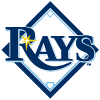
Snell recently got the call to the show, making his big-league debut in Yankee Stadium last week. He was a strikeout maven in the minors with more than 10 K/9 in 441.1 innings, though his walks were out of control, checking in at 4.5 BB/9 over six minor-league seasons. He had 21 strikeouts and seven walks through 14.1 innings at Durham before receiving the call, exemplifying his penchant for true outcomes. A high count of both strikeouts and walks leads to heavy usage, with lots of pitches thrown even on days with low inning totals.
The Rays will not want to stress their prized pitching prospect, whose innings are more taxing than average before getting to the raw counts. As to that end, Snell pitched just 134.0 innings in the minors last season, and only 114.0 innings the season prior, so the Rays will likely keep him within the 150-160 inning range even in a best-case scenario, though his lack of pitch-count efficiency could easily trim that further. There is an opportunity to be seized when any top prospect arrives, and the fact that his value is likely limited to the first four months of the season adds to the incentive to get a quick return on Snell's value.
Steven Matz (LHP)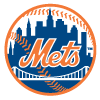
Matz has kept runs off the scoreboard throughout his professional career, with solid, though not spectacular, peripherals throughout the minors. The overall success of the Mets' rotation has grandfathered Matz into the fantasy circle of trust, but he hasn't necessarily earned it yet, so there is marginal value baked into his profile before we get into innings caps. The success and youth of the arms in the Mets' rotation has made workloads a seemingly-constant topic of conversation, while injuries to players such as Matt Harvey and Zack Wheeler may have tempered their approach with young players.
The fact of the matter is that Matz threw just 141 combined innings last year, 140 frames the year before, and he has never exceeded that workload. Odds are that the Mets will keep him under 170 innings this season, and there's no telling what he'll look like as he ventures into uncharted territory for workloads. It will take a little bit of time for the sting from his first start to fade from his numbers, but if he spins a couple of strong starts in a row then I would look to off-load the young lefty due to his riding the coattails of his staff-mates and the probability that his season will be cut short even if successful.
Wait for Summer
Jose Fernandez (RHP)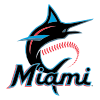
The Marlins have already said publicly that they will limit Fernandez's innings this season, and though there was some speculation that they might take a per-game approach to his workload rather than looking at a raw count of innings, the early returns suggest that final pitch counts rule the day. However, Fernandez has been very inefficient with his pitches this season, running deep counts and enduring long innings that tax his stamina. The fact that he throws so hard only adds to the kinetic toll, and after throwing fewer than 90 innings last season, the Marlins will be cautious with his workload as he puts Tommy John surgery further in the rearview mirror.
If one can bring themselves to part with Fernandez at some point, then for multiple reasons the best time is later in the season. We want to allow time for Fernandez to re-establish his value, as a rough start to the season will keep opposing managers from emptying their pockets in a trade. We also want to reap as many benefits as possible from that thunder bolt of a right arm, so the next two months of performance will be key. But his optimal trade window may be very small, as the innings-cap is already well known and the trade will need to happen before workloads start dominating his updates.
Aaron Sanchez (RHP)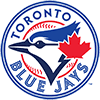
Sanchez has been yo-yo'd between the rotation and the bullpen, as a limited repertoire and vulnerability to platoons have dogged him throughout his career. The Blue Jays' rotation is a bit of a mess, with young studs Sanchez and Marcus Stroman both having pitched very limited innings in 2015 (for various reasons) and now being counted on to lead a rotation with postseason aspirations. In fact, Stroman falls into the same category, as there's no telling how the Jays will juggle the innings of their patchwork rotation as the season progresses. I like the current setup to hold through the All-Star break, but after that it could all fall apart. Since waiting too long could carry a tremendous cost, I would be looking to deal Sanchez or Stroman by the end of June. The only certainty in the Toronto rotation seems to be that R.A. Dickey will toss 200 innings, regardless of performance.
Joe Ross (RHP)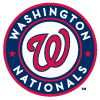
I'm a bit torn on Ross, as I liked him more than the crowd up until his second start this season, and suddenly the expectations have skyrocketed past reasonable reality. He can legitimately help in the ERA and WHIP categories, but the strikeouts are likely to be a disappointment, and in a modern baseball world where teams need to average a K per inning, he needs to be paired with a high-strikeout reliever to stay on pace. He pitched 152.2 innings last season, and the Nats could very well push him to at least 175, but the combination of his current hype and the likely cap on his innings make him a strong candidate to deal.
Deadline Deals
Carlos Rodon (LHP)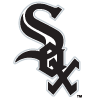
I'm a big proponent of Rodon this season, and I'm anticipating a massive breakout that impacts all four categories that a starting pitcher can influence in fantasy. The White Sox might not adhere to conventional innings increases, given Rodon's college pedigree and the fact that he was deemed ready after just 35 innings in the minors. These elements cloud his situation, but Rodon threw just 149.1 innings last season, split between the majors and minors (139 were in the bigs). Whether that means that the Sox halt him around the 170-inning mark or decide to throw caution to the wind with his workload, it is tough to trust a pitcher who is going into uncharted territory in terms of workload. Obviously you want to hold onto Rodon in keeper leagues, but in single-year formats I would reap value for the first few months of the season and then look to deal the southpaw near the deadline, while the fantasy community is distracted by real-life trade implications and not thinking about the volatile value of someone like Rodon in the second half.
Luis Severino (RHP)
Severino has been getting tattooed this season, so his trade value is at an all-time low and he's not worth dealing until he can recoup some perceived value. That said, it will take a while for his numbers to look like assets rather than liabilities, as he's already given up 32 hits and 15 earned runs in 19.1 innings, with just 12 strikeouts. If he is to have any trade value this season then it will be later in the campaign, when Severino has hopefully righted the ship and his stats have rebounded from this first-month swoon. Severino pitched 161.2 innings last year between the majors and minors, and if he continues to be so inefficient with his pitches then he might be able to make 30 starts and still keep his innings under 190.









